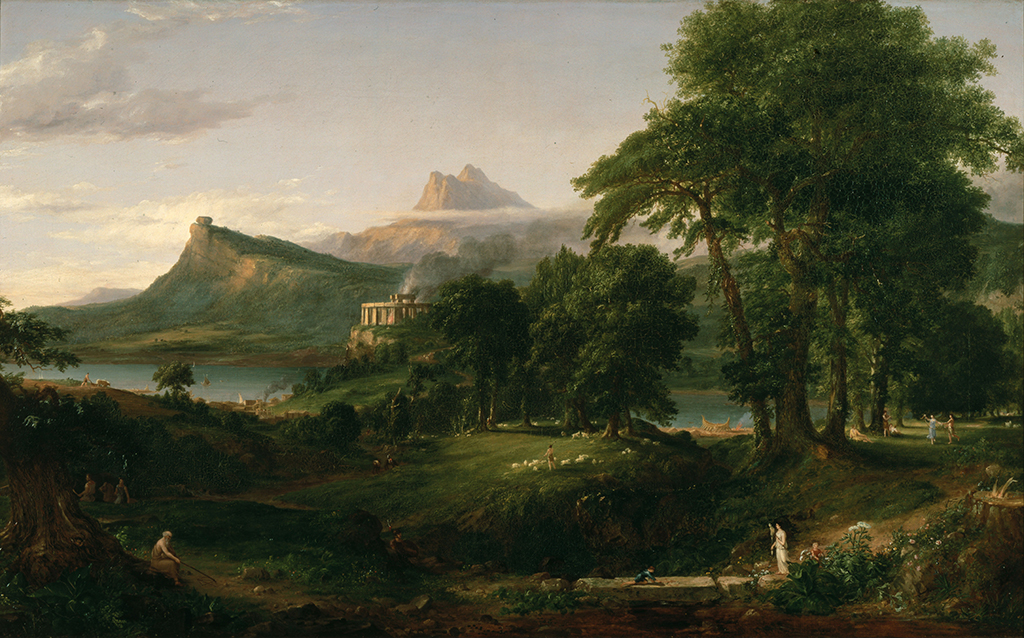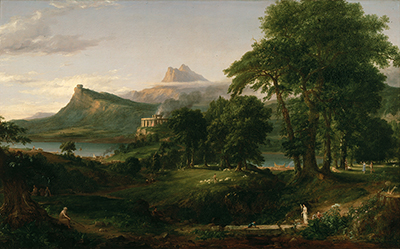The Course of Empire: the Arcadian or Pastoral State, now owned by New York's Metropolitan Museum of Art, was the second in a series of five oil paintings completed by Thomas Cole between 1833-1836.
Although he was born in the north-west of England, Cole emigrated to the United States, where the theme of these paintings resonated with a population descended from hard-working pioneers and settlers, in a land of wild open spaces. Literary inspiration came from Childe Harold's Pilgrimage by the poet Byron, from which Cole quoted in newspaper adverts.
The others in the series are The Savage State, The Consummation of Empire, Destruction and lastly, Desolation. They show the rise and fall of a city situated at the end of a river valley, close to the sea, with a boulder on a crag that looks out over the valley. It has been argued that this signifies the permanence of the earth against the uncertainty of the human contribution, but certainly, the works are an indication of Cole's pessimistic political views at the time. As an immigrant, he may have felt like an outsider in his adopted country, enabling him to stand back and view it dispassionately.
Whereas the first picture, The Savage State, records the start of a dark and stormy day at the time of hunter communities, overlooked by one mountain crag, the scene in this second canvas, The Course of Empire, uses lighter tones to suggest a clear morning in spring or summer. Idyllic pastures replace rough terrain, which has been tamed and subdued, and rural activities play out in the background. The occupation of tending livestock has taken over from hunting, and a hierachy is arising.
Smoke (perhaps from sacrifices) emerges from a megalithic temple, in a scene reminiscent of ancient Greece. In the foreground, a man draws what could be a geometric problem on the ground, and the whole view is one where humanity is at peace with its surroundings. However, the building of a warship, and a worried look from the mother of a child drawing a soldier, reminds the viewer of the coming of imperialism. The setting this time is further along the river, with a second more distant, but bigger, mountain now visible, possibly to suggest the newness of society compared with the ancient natural world. The titles of the last three paintings give a strong indication of where this narrative is going.
At the time of this series, Thomas Cole was very popular, and his influence spread, both among his contemporaries and for later generations of painters. He picked up the classical European way of depicting landscapes while travelling in Italy, and applied the same ideas of space to the American wilderness. His early walks over the moors of Lancashire in England would also have left him with an appreciation of open land. Cole then used the style to express liberal ideals, and in this way, his influence and relevance has continued, making him one of the most influential artists in the history of liberal thought.





